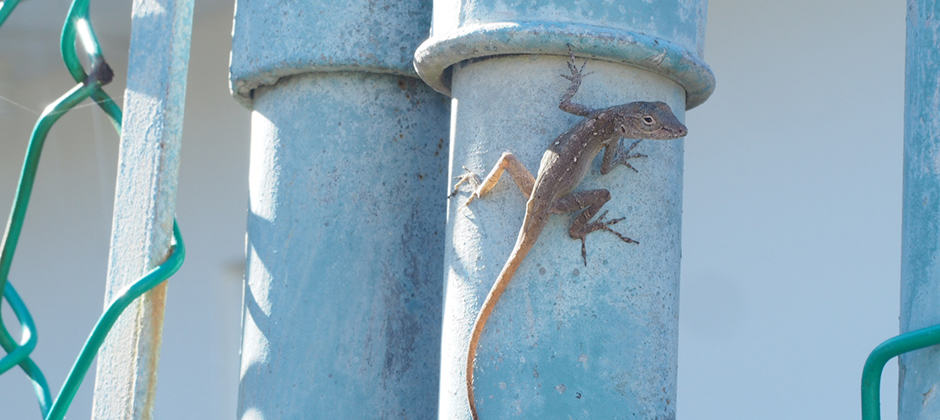Share this article
Urban lizards tolerate more heat
When Kristin Winchell was sampling Puerto Rican crested anoles(Anolis cristatellus), she began noticing lizards’ body temperatures were elevated amid the heat-trapping concrete and asphalt of urban areas.
“But we didn’t really know what that meant,” said Winchell, a postdoctoral research associate at Washington University in St. Louis who co-led the study with Shane Campbell-Staton, an assistant professor at the University of California, Los Angeles published inNature Ecology and Evolution.
As they investigated, Winchell and her colleagues found that lizards in cities are able to tolerate heat better than those in forests, which tend to be cooler.
The team performed studies in four Puerto Rican municipalities across the island, conducting thermal tolerance experiments in one forested area and one urban area in each municipality. After gathering data on the environment and taking the lizards’ body temperatures, the researchers conducted the experiments. They slowly heated up each lizard while recording its body temperature, then jiggled it until it fell on its side. If it didn’t get back up and run away, they knew it was incapacitated and had reached the hottest temperature it could tolerate. Then, they cooled the lizard down — which took only about 30 seconds — and released it back into its environment.
Across all four municipalities, they found, urban lizards were able to tolerate higher body temperatures than the forest lizards. “In some cases, there were pretty drastic differences,” Winchell said. At one of the sites, the urban lizards tolerated temperatures over 40 degrees Celsius — far more than the 25 degrees most reptiles tolerate for long periods.On average, urban lizards were able to tolerate temperatures about 1 degree higher than ones in forested areas.
This tolerance allows the lizards to stay more active during the hottest parts of the day and use different areas to gain access to other resources.
Winchell and her colleagues also looked at the genomics of the different lizard populations. They found that only urban lizards have a gene variant that allows them to tolerate hotter temperatures, but that gene is only expressed if there’s a triggering event that causes them to respond. Lizards that have the forest genotype can’t tolerate the hotter temperatures as well, they found.
“It’s interesting because a lot of thermal responses are thought to be environmentally induced,” she said. But in this case, it seems that there’s a gene that allows them to respond to high temperatures, which they refer to as a high plasticity genotype, she said. The study showed that this gene is under selection in urban environments.
In another paper recently published in Evolution, Winchell and her colleagues modeled 131 species of anole lizards across the Caribbean to determine what factors are responsible for the species being more tolerant to urbanization.
They found that species that experience hot and dry conditions, species with higher body temperatures, and species that have larger, denser scales—which is thought to be important for thermal and dryness tolerance — are ones that are more likely to persist in urban areas. In both studies, they found a sign that having the capacity to tolerate elevated thermal environments is important for urban lizards. Shorter limbs and more lamellae — small plates on the lizard’s toe pad — were also associated with urban tolerance. In past research, Winchell found that these characteristics help the lizards cling on to buildings. “We don’t want to say the species that score high on our scale are going to be great with urbanization,” she said. “But we did some analyses, and our model seems to have high predictability power.”
Winchell said this means her study could be useful in determining which species should be studied to learn more about urban ecology and evolution and why other species are not tolerating urban areas as well as what needs to be done to protect them.
Header Image:
Puerto Rican crested anoles are found in many Puerto Rican urban areas. Researchers found the city lizards have evolved greater heat tolerance that enables them to thrive in urban environments.
©Kristin Winchell/Washington University








